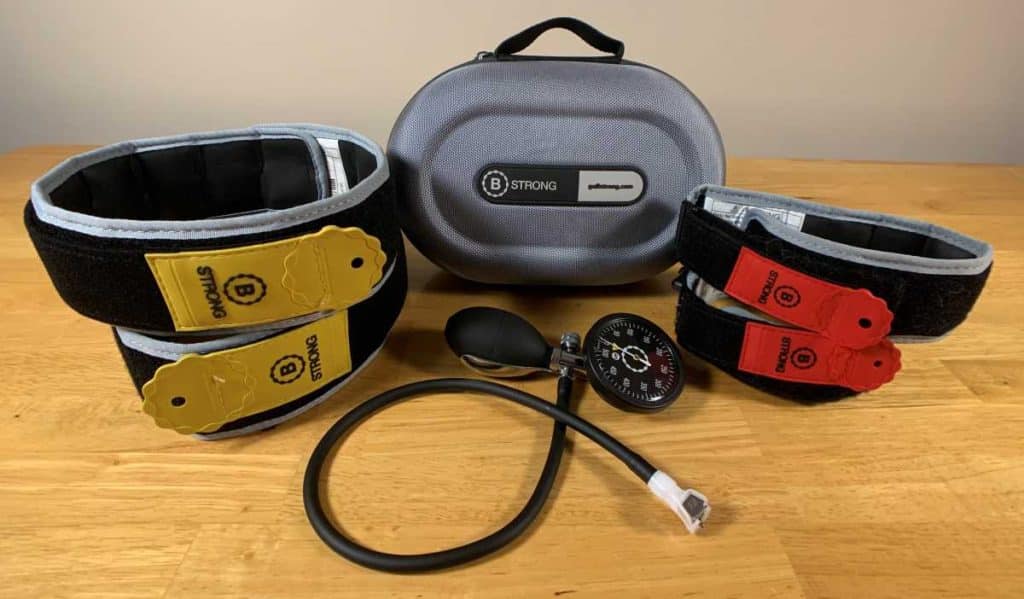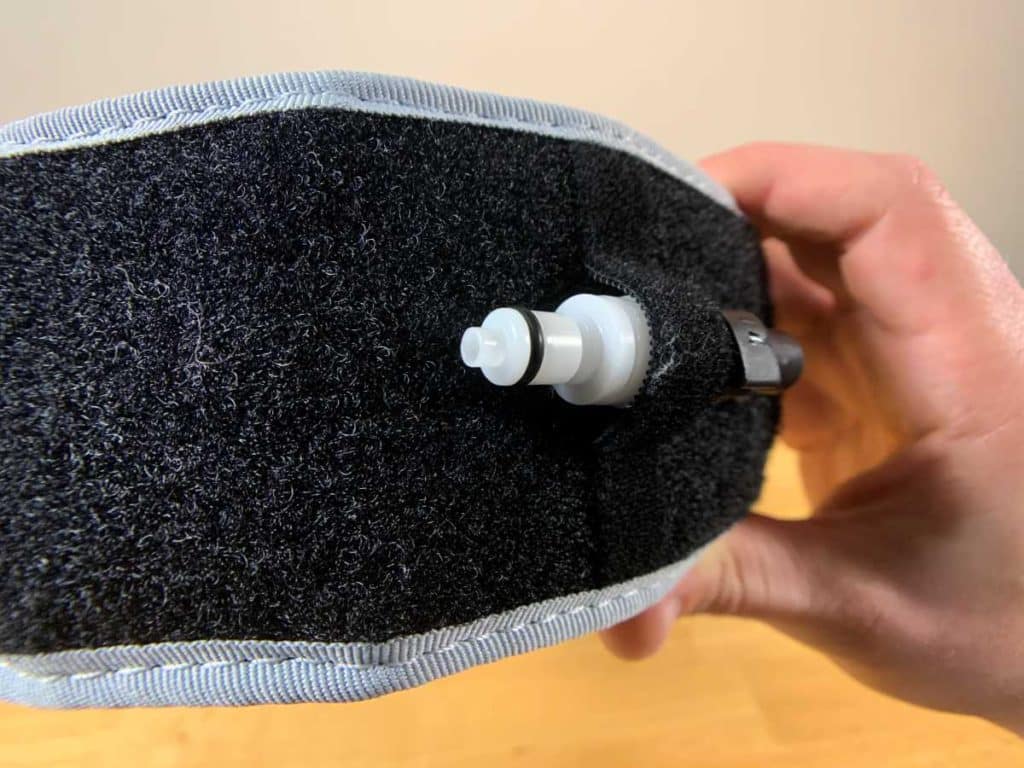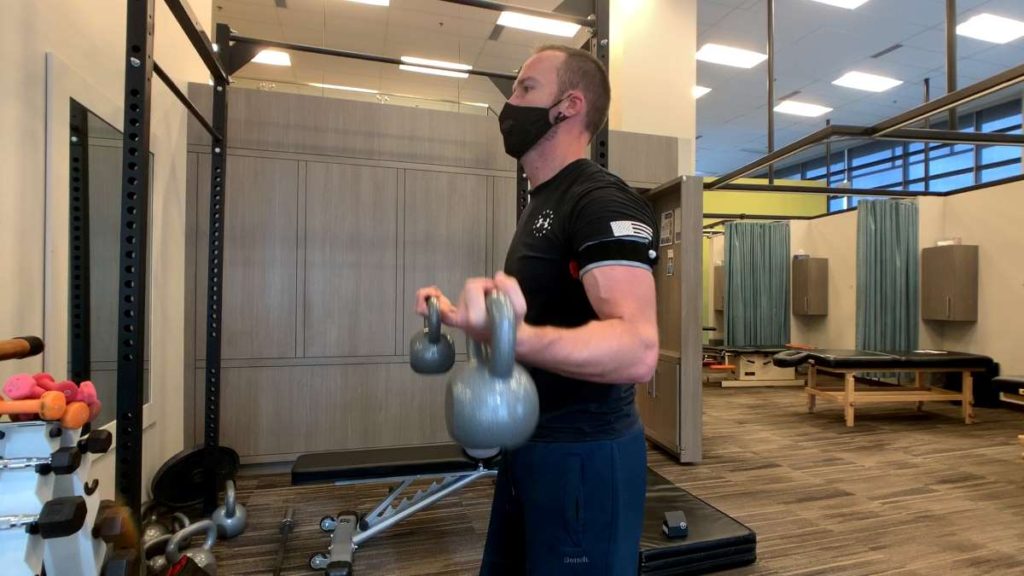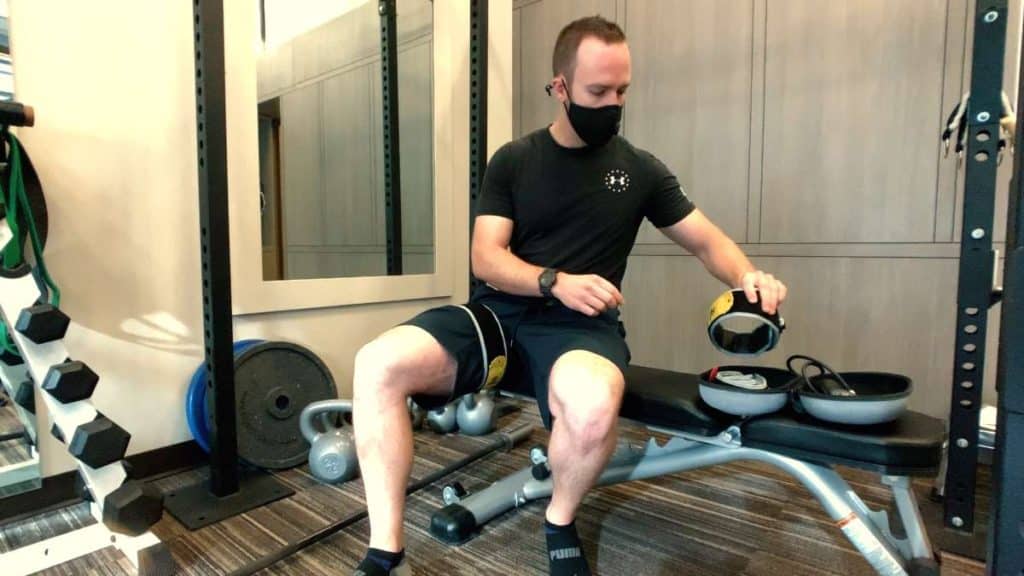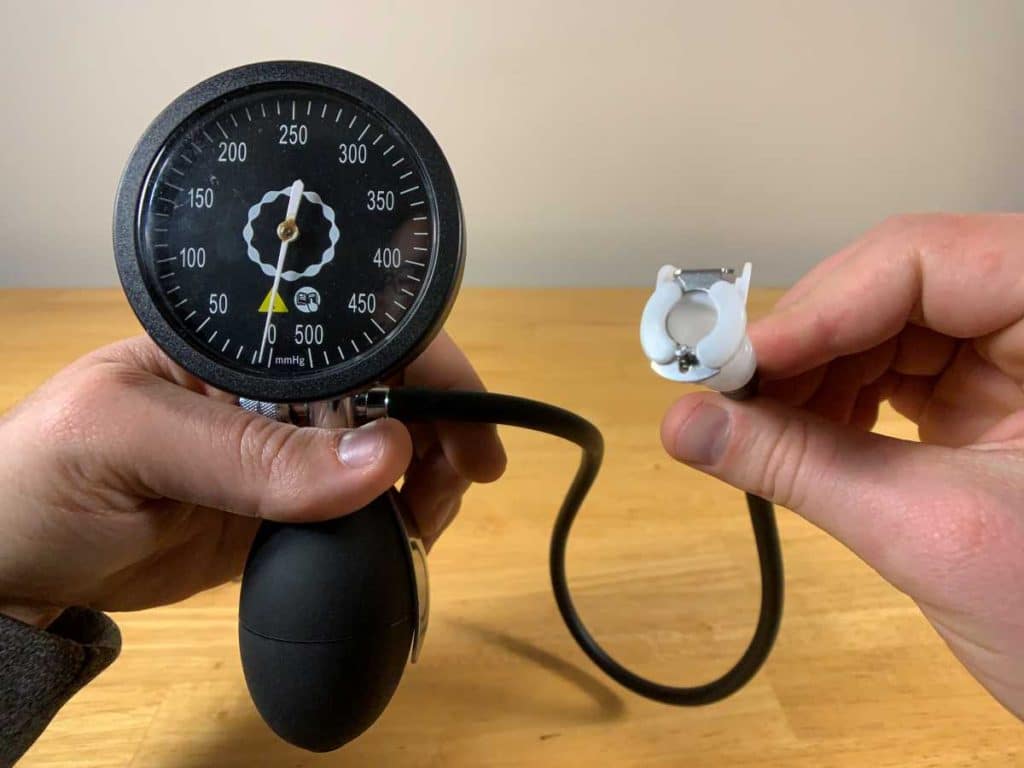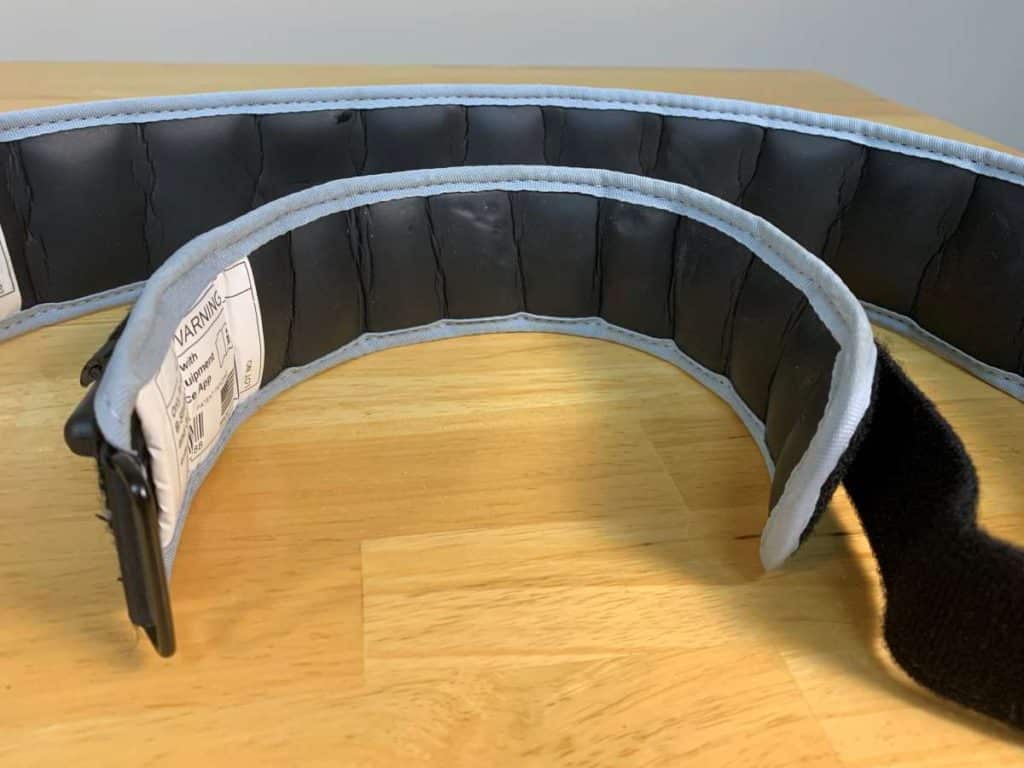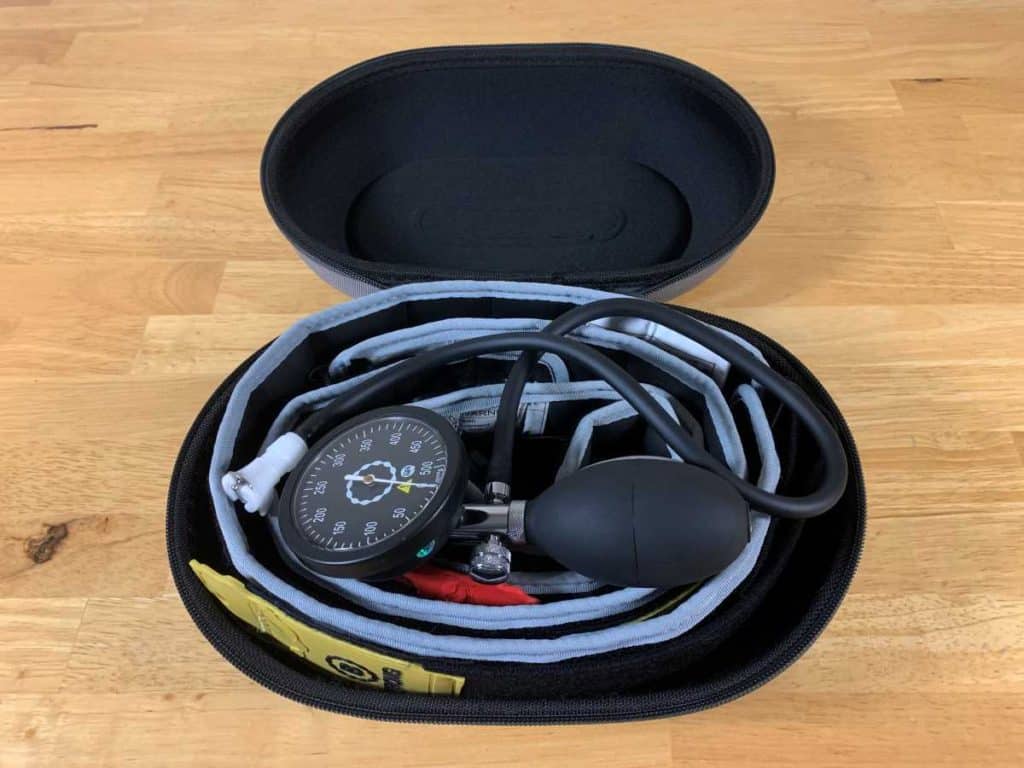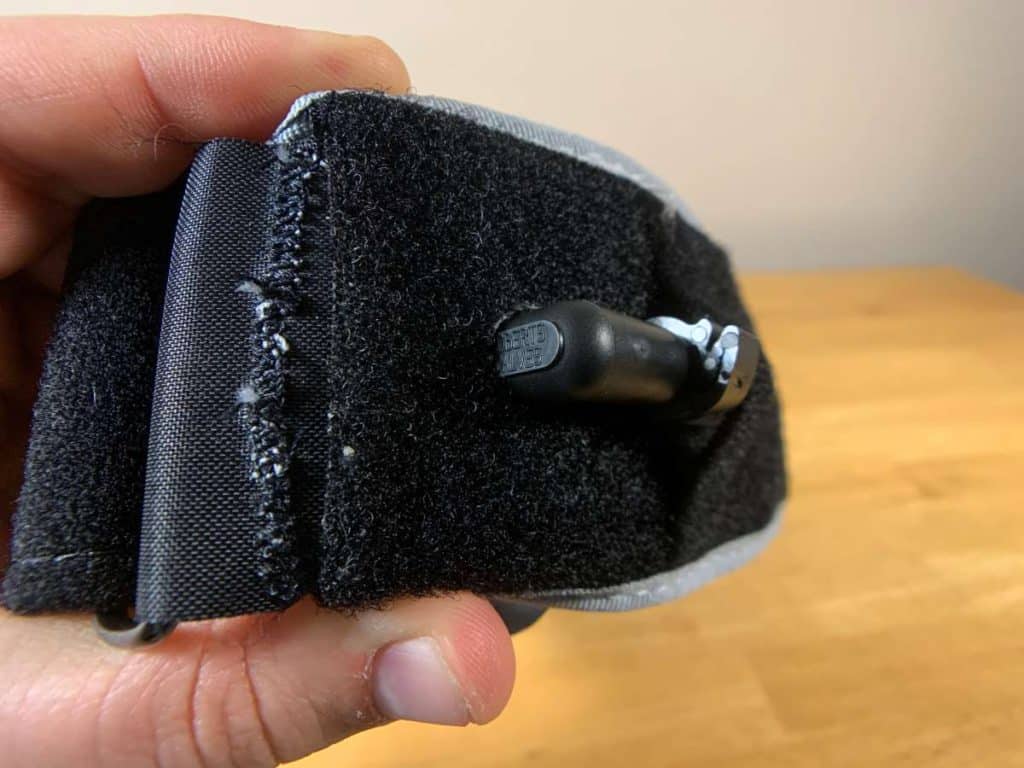There are two things that are for certain with me these days: blood flow restriction training is amazing for a variety of reasons and being smart with my money in this economic climate is a good idea. If you’re wanting to spend your money wisely and are interested in blood flow restriction training, I am hoping this blog post will help you out.
In this article I will be providing an in-depth breakdown on my experiences with and thoughts on the B Strong blood flow cuff system. Having used these cuffs extensively for a couple of years, I know the pros and cons of these cuffs and want to help you make a more informed decision as to whether or not these cuffs will be a good investment for you.
The quick article summary: Overall, B Strong’s blood flow restriction system and cuffs are pretty great. I’d give them an overall score of 9/10; there are a couple of design aspects that I believe could be enhanced in order to preserve longevity, but these aren’t critical enough for me to feel that I didn’t get my money’s worth when purchasing and using the system.
Having been using them extensively for the past couple of years in the clinic, in the gym and on a variety of populations (including myself, of course), they’ve done the job quite nicely while giving me and all those whom I use it on some solid peace of mind for both safety and efficacy.
If you want to know all of the specifics of the B Strong system along with my own personal experiences with using it, then keep reading the rest of the article!
If you feel that picking up some B Strong products is right for you, you can save 10% on your purchase by using my affiliation code “JIMWITTSTROM” at the checkout on the website. Additionally, you can obtain the same discount when clicking through this link taking you to B Strong Training Website Store.
Keep in mind, this review is not a discussion on what blood flow restriction training is or how to use it. If you’re curious towards learning more about this promising training intervention and/or want to know what the scientific community and academic literature are finding, be sure to check out my other blog posts: What is Blood Flow Restriction Therapy? How, Why and When to Use it and Blood Flow Restriction: Evidence and Uses for Injury Rehabilitation, as they will provide you with all sorts of this information.
Article overview (quick links)
Click/tap on any of the following bulleted headlines to instantly jump to that particular section of the article.
- What is the B Strong system and what makes it unique
- On which types of individuals I have used these B Strong cuffs
- Pros of using the B Strong system
- Cons of using the B Strong system
- Price-to-performance ratio
- Final thoughts on the B Strong system
- Concluding remarks
Related articles:
- A Review of the Kabuki Boomstick (Why it’s Worth Getting)
- What is Blood Flow Restriction Training? How, Why and When to Use it
- Blood Flow Restriction: Evidence and Uses For Injury Rehabilitation
What is the B Strong training system and what makes it unique
The B Strong training system is the brainchild of Dr. Jim Stray-Gunderson, a medical doctor with an expertise in sports medicine and exercise physiology. Him and the rest of the team have designed their blood flow restriction training system to be used on athletes, weekend warriors and those using the system for rehabilitative purposes.
B Strong makes blood flow restriction cuffs for both the arms and the legs. These cuffs all use pneumatically (air pressure) controlled bands that restrict blood flow around the extremities during exercise. The cuffs are inflated via a handheld sphygmomanometer (so you know the exact amount of pressure you’ve put into each cuff) and are secured around the extremities with Velcro.
B Strong prides themselves on making cuffs that are incredibly versatile. As a result, the cuffs can be used for all sorts of activities and movements – including swimming. Personally, I’ve never used my cuffs for any aquatic endeavors, but it’s certainly nice to know that these cuffs are about as versatile as they come.
The safety of the B Strong system
B Strong’s claim to fame with their cuffs is that the cuffs are designed in a manner that allows them to be extremely safe on individuals partaking in blood flow restriction training/rehabilitation; even when pumped to maximal inflation the cuffs will not fully occlude blood flow to the limb, which they’ve shown via real-time ultrasound.
While literature shows that blood flow restriction training is a safe intervention when used appropriately and on appropriate individuals, this system’s added peace of mind gained from the real-time ultrasound study is a nice bit of reassurance for many individuals (including many of my patients within the clinic).
What sizes of cuffs does B Strong make?
The size of cuffs that you will need is based on the circumference of your extremities and when applied, the cuffs are secured via Velcro. B strong provides a sizing chart on their webpage to help you know which size(s) will be best for you. The sizing chart is quite accurate, based on when I used it for purchasing my own set. You’ll notice that there are different colored bands, with each color representing a certain size of band.
On which types of individuals I have used these B Strong cuffs
I have been extensively researching and using blood flow restriction for the past couple of years now. I’m pretty well versed on both the performance-based aspects of blood flow restriction training (using the bands to increase muscle size and strength) along with the rehabilitative-based aspects of it as well.
As a result, the last couple of years have seen me I use it on myself, on my patients when working as a physical therapist and on many of my clients when working as a personal trainer. When it comes to using the cuffs on myself, they’ve always felt comfortable and I’ve never had any issues with the cuffs not staying inflated, not staying in place or not behaving as they should be. The same can be said with all those whom I’ve used them on as well.
Related: Blood Flow Restriction: Evidence and Uses For Injury Rehabilitation
With all of that now being said, let’s dive into the meat and potatoes of this review.
Pros of using the B Strong system
For this review, let’s start off with the good. There’s plenty of good to go around, but the biggest strengths of this system reside around safety, versatility, durability and portability, all of which I’ll be discussing below.
Safety
As mentioned at the start of this review, the B Strong BFR system prides itself in being proven to be incapable of completely occluding blood flow into an extremity that is being compressed by a cuff. I don’t know of any other pneumatic system in the same class as the B Strong cuffs that has confirmed this via real-time ultrasound the way that B Strong has.
While BFR has routinely been shown to be a safe intervention in scientific literature when applied appropriately and on appropriate populations, the added peace of mind with this system’s inability to full occlude blood flow is good reassurance to anyone using this system.
It’s ESPECIALLY important for me since I often use these cuffs on patients whom I treat within the clinic. They enjoy learning that this system is designed by medical professionals and that it’s been proven to be exceptionally safe.
Related: What is Blood Flow Restriction Training? How, Why and When to Use it
Versatility
I’m much more of a fan with BFR cuffs that don’t use real-time feedback. Maybe that sounds blasphemous to some, but while real-time systems such as the Delphi System or the Kaatsu Master do offer this feature, it comes with some major drawbacks. The first simply being the price; neither of these systems are cheap and you’re looking at paying a couple of thousand dollars if you want to own one.
The B Strong system certainly isn’t as cheap as using knee wraps or simple cinch-straps, but they’re certainly a heck of a lot less expensive than any real-time pressure-monitoring systems currently on the market
The second drawback is the limited versatility in movements and exercises you are able to do with these real-time systems since those cuffs are hooked up to a line in order to provide the real-time pressure feedback. The end result is that these systems can greatly limit the types of movements or activities you can do when they’re hooked up to you.
You can still do plenty of stationary exercises, but don’t expect to be doing anything terribly dynamic. Don’t get me wrong, I’d absolutely LOVE to have one of these systems, but unless I’m getting it for free or for a MASSIVELY discounted price, it’s not going to happen.
This is what B Strong gets right with their cuffs – they have designed their cuffs to be minimally obstructive when applied, which includes no need for a hook-up line (the sphygmomanometer will let you know how much pressure you pump into the cuffs). The result is complete freedom of movement when the cuffs are on.
One could choose to use them for more stationary, traditional strength training movements, but could also use them with more dynamic movements such as climbing hills or stairs. They could even be used for a multi-dimensional movement activity such as a lateral, backwards and diagonal movements.
- B Strong even mentions that you can run with their cuffs on. Assuming they’re referring to the legs and not the arms, I can’t say that this would be smooth sailing for me, as I feel the cuffs would rub against each other with each stride I’d take. BUT, I have walked with them on plenty of times and that works just fine for me. (FYI: Blood flow restriction has been shown to be effective with walking protocols for a variety of populations.) Here are some good articles to read over regarding improvements through walking (the links take you to the PDF files to read):
- Blood Flow Restriction Walking and Physical Function in Older Adults
- Low Intensity Blood Flow Restriction Training: A Meta Analysis
Comfort
When it comes to wearing these cuffs, they’re very comfortable. Whether you choose to wear them overtop of clothing or directly on skin, they feel quite nice; the inflatable bladder on the underside of the cuff gives good compression without irritating your skin. They also don’t slip or slide around your limbs as you begin to sweat.
The width of the cuffs helps with optimizing comfort since cuffs that are too wide or too narrow are oftentimes reported to be too uncomfortable to use for longer periods of time or with certain movements or exercises that the individual is trying to perform.
Overall, B Strong nailed the comfort portion of this product.
Durability
By and large, the B Strong system is a pretty durable one. It has one or two shortcomings (discussed in the Cons section of this post), but I still feel that durability gets a passing grade without any major concerns from me.
B Strong has done a good job of creating a system that holds up to high levels of regular use. They’ve also done a great job of creating a system that can be easily and quickly cleaned. While this last point may not be super critical to everyone, it’s rather important to me, as I use these things on my patients within the physio clinic and my clients in the gym when personal training. No one likes to wear gross, grubby and sweaty cuffs. So the ability to give these things a quick spray and wipe without needing time for things to dry or really having to spend time cleaning any nooks or crannies is quite nice.
Portability
When you purchase a B Strong system, you get a nice little hard-shell case along with it, which will serve as a nice way to keep your cuffs safe and protected if carrying them around from place to place in a gym bag or via any other means. If you’re spending some good money on your cuffs, having a protective case to store them in is quite nice, as opposed to a mesh bag or anything else that won’t offer good protection.
The cuffs and sphygmomanometer fold up quite nicely into the hard-shell case, although it can be a little tricky to make them fit (the key is to wrap the cuffs around one another and have the sphygmomanometer rest on top). With everything tucked away within the hard-shell case, you’ve got a nice football-sized protective case for your entire system.
Cons of using the B Strong system
For me, although the cons of this system are far outweighed by the pros, there are some issues and/or potential issues that are worth pointing out. They certainly aren’t deal breakers for me, but improvements in the following areas would be a welcome change, as I feel they would further enhance the robustness and durability of this system:
Velcro
While the Velcro on these cuffs is holding up quite well after two years of higher volumes of use, the fact of the matter is that Velcro always has a limited shelf-life, so to speak. Use it enough and eventually the Velcro doesn’t work or stick all that great anymore. Admittedly, this takes high volumes of use before it become noticeable. But it’s essentially just a matter of time in the grand scheme of things.
Nonetheless, a system that could move away from Velcro and to another means for securing the cuffs would be welcomed by me. Blood flow restriction training/rehabilitation is all about sustained pressure around the extremities being exercised, and without adequate functioning Velcro to hold appropriate pressure around the limbs (or to hold the cuffs in place), the intervention is essentially useless.
I don’t know what would be more ideal in place of Velcro, however, and since the Velcro on my cuffs is still holding up quite nicely, I feel like I’m on pace to get at least a handful of years out of these things before I need to purchase some new cuffs. Again, it’s certainly not a deal breaker to me, but my mind always thinks long term on products that I want to get as much use out of as possible.
Durability
Overall the durability of the B Strong system gets my approval, but I’ve got my eye on a few things that I wish B Strong could up their game with.
The main issue I’ve got my eye on is some of the stitching that’s given way on one of my leg cuffs where the Velcro is stitched down onto the cuff itself. There’s a split that’s developed here, due the stitching giving way. Is this likely to get worse over time if I can’t find a way to remedy it? Most likely.
Now, keep in mind that I’ve used these leg cuffs a TON since I got them, but even still, I feel that there’s a need for B Strong to add some re-enforced stitching around these areas. The cuffs (and the subsequent stitching connecting the Velcro to the cuff) get exposed to a high level of torque each time they’re put around the extremity and tightened up. Adding some re-enforced stitching to these areas only makes sense seeing how you essentially can’t anchor down the cuffs in a tight manner when the Velcro no longer attaches to the cuff itself.
At this point in time it doesn’t seem to be impairing the function of the one cuff, nor does it seem to be getting noticeably worse each time I use it, but it does force me to really keep my eye on it and take a bit of extra caution when using that particular band. I’m sure I can find someone who can perhaps re-stitch it, but it would just be nice if this hadn’t happened in the first place.
For the record, my arm bands are holding up just fine in this regard, however it’s worth noting that I use my arm bands way less than my leg bands. They probably get about a quarter of the use as my leg bands.
Price-to-performance ratio
Any time I’m going to spend my hard-earned money on something, I always want to feel like I’m getting what I’m paying for. I feel this to be the case with most other people as well. This is, in fact, a big reason why I’m reviewing this system – I couldn’t find a lot of reviews on these cuffs when I was considering purchasing from B Strong, and it’s always nice to read other reviews on things before making your own purchase.
When it comes to the B Strong system, at the end of the day I do feel like I’ve received what I’ve paid for, although had this system been any more expensive, I likely would have shied away from making the purchase. These cuffs aren’t the cheapest on the market, but the quality and durability are there, ultimately making them less expensive if looking at the expected lifespan one can get out of these things. In other words, a few hundred dollars for a handful (or more) of years is a lot less expensive than a couple hundred dollars and only two years of use.
At the end of the day, I feel that the safety, the versatility and the durability that these cuffs offer are what sell me on the system. I’m noticing some minor breakdown on my cuffs, but only after high levels of use. Put 200,000 miles on a car and you’re bound to have some issues, ya know?
Final thoughts on the B Strong system
The B Strong system is a worthy system to pick up if you’re in the market for a set of cuffs that offer peace of mind in terms of safety, versatility and overall build quality. There certainly are other pneumatic systems on the market, and while I’m aware of a few of them, I haven’t used them and can’t attest to their features. For me, I’ve been satisfied enough with my purchase that I’ll purchase another set from B Strong if/when the time arrives to do so. If it ain’t broke, don’t fix it, right?
I was on the fence when deciding to purchase a system from B Strong – they’re not cheap for someone like me, and so I really wanted to know that I had made a good purchase. I’m not disappointed in any way with these cuffs and the overall system. If you find yourself to be on the fence and/or in the same boat that I was at the time, hopefully me sharing my thoughts and experiences on this system will help give you some peace of mind, one way or another.
It’s certainly nice to have some slick, professional looking bands, especially when working in a clinic and using them on my patients, or in the gym for my personal training clients. Having a nice looking system certainly helps when it comes to trying to build and maintain a professional image.
My hope would be that B Strong can take an already great product and continue to build on it, enhance it and iron out the couple of minor issues that I’ve come across with my cuffs. After all, that’s what life’s all about – creating, inventing and then continuing to revise and further improve upon what we’ve already made.
Concluding remarks
Hopefully this review has helped you feel better informed towards whether or not B Strong’s blood flow restriction system is right for you. No one, single product is right or ideal for everybody, but through my own anecdotal experience I believe that B Strong has created a system that should work well for most people, be it for augmenting injury rehabilitation or simply to improve muscular strength and hypertrophy in non-injured individuals.
Above all else, keep training or rehabbing with appropriate frequency and intensity, as this is always the backbone to getting stronger. Remember that getting stronger and/or overcoming injuries won’t work unless you do!
Train hard!
– Jim

Hi! I’m Jim Wittstrom, PT, DPT, CSCS, Pn1.
I am a physical therapist who is passionate about all things pertaining to strength & conditioning, human movement, injury prevention and rehabilitation. I created StrengthResurgence.com in order to help others become stronger and healthier. I also love helping aspiring students and therapists fulfill their dreams of becoming successful in school and within their clinical PT practice. Thanks for checking out my site!


